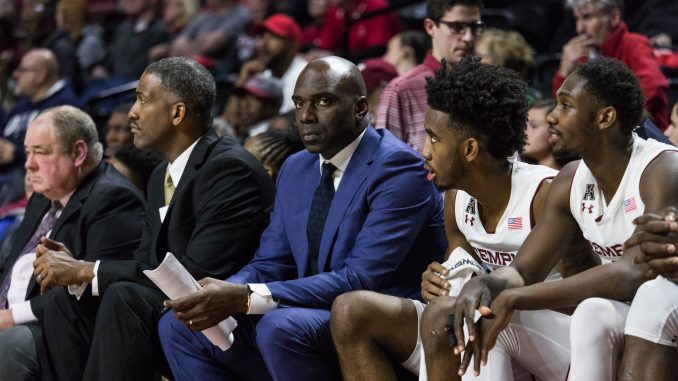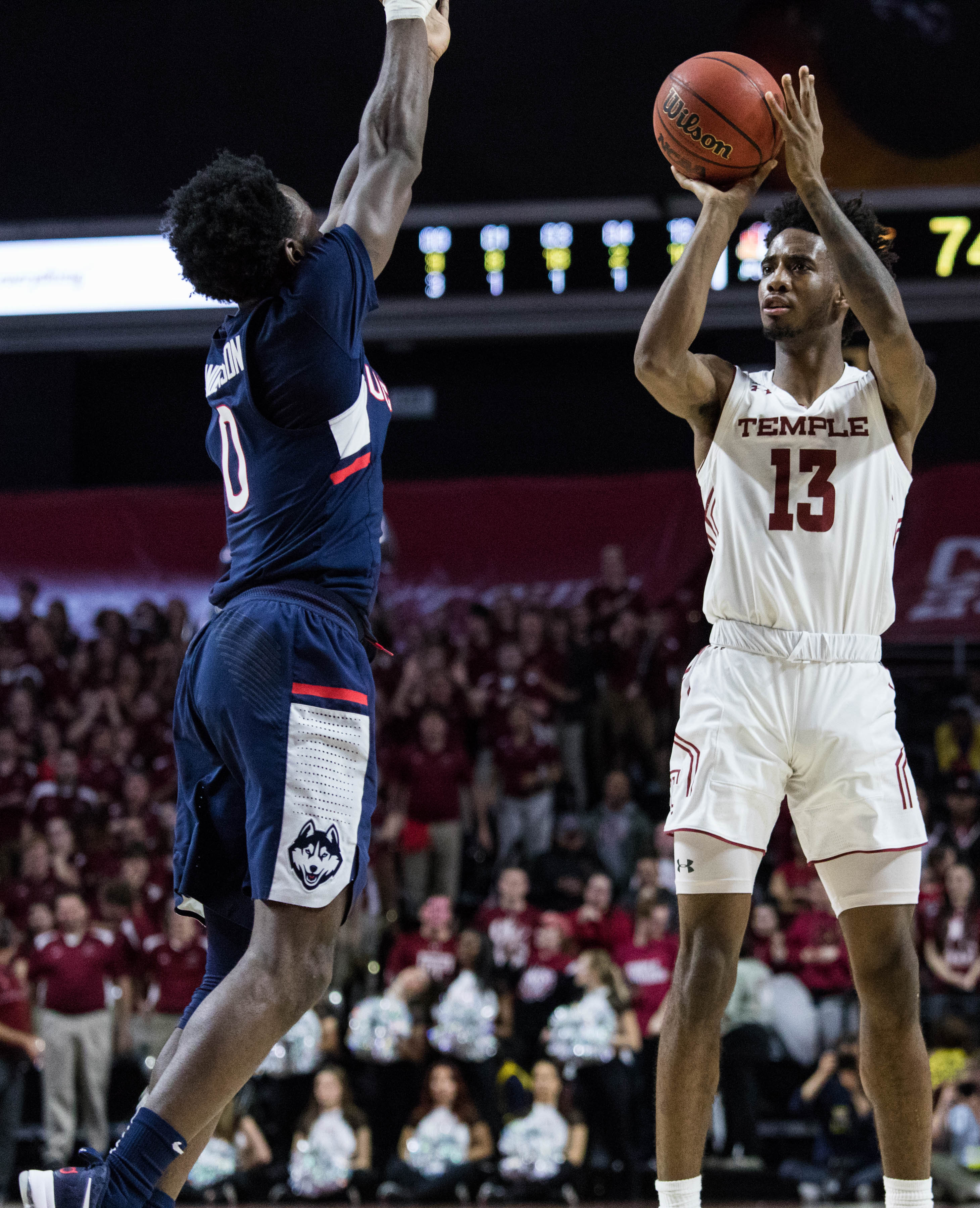
After last season ended, Quinton Rose wanted to improve one specific skill: his 3-point shot.
When he briefly went home to Rochester, New York, after the spring semester, he worked with his former Amateur Athletic Union coach Kevan Sheppard.
The sophomore guard and Sheppard worked at Rose’s former high school, Bishop Kearney in Rochester, getting up 500 to 1,000 3-pointers off screens each day.
The work has translated. Rose leads Temple with 14.2 points per game and is second with a 38.6 3-point percentage — a 9 percent increase from last season.
“Confidence is the biggest difference,” Rose said. “When that’s falling, it makes everything else offensively a lot easier.”
Junior guard Shizz Alston Jr. took a similar jump from his freshman season to his sophomore season. After averaging two points per game as a freshman, Alston led the Owls in scoring the following season.
“I stayed here my freshman summer, and he did the same thing,” Alston said. “Just staying in the gym during the summertime and putting the work in, getting stronger and then you become more confident. Once you become more confident, then your production on the court increases.”

During the summer, Rose, Alston and sophomore guard Alani Moore II worked on improving their strokes from beyond the arc at Pearson Hall.
Like Rose did with Sheppard in his hometown, the three guards ran off ball screens and practiced catch-and-shoot 3-pointers.
The trio also played 3-point games to keep their workouts competitive. Each 3-pointer sunk counted as 10 points, and they would play up to 100.
Alston said the purpose of the game was to adapt to hitting big shots under pressure and closing out games.
So who took the crown most of the time?
“It was always me,” Alston said jokingly.
“I would tell the guys to find your sweet spot,” he added. “Find your shot. Find a spot where you feel the most comfortable at.”
Rose averaged double-digit point totals three out of his four years in high school, including 20.9 points per game during his senior season.
The 6-foot-8-inch guard said he was able to do most of his damage at the high school level off layups and fastbreak dunks because his athleticism made it easy for him to get to the basket.
But at the college level, he has been trying to mold himself into an all-around offensive threat.
“They get into college and realize you can’t get to the basket as much as you could when you were in high school,” assistant coach Aaron McKie said. “There are other things you’re gonna have to do out on the court.”
“[This] means being able to make a shot, being able to play without the basketball, being able to set a screen,” he added. “So all of those things become important.”
McKie sits closest to the players on the bench during games. While on the bench, he tries to keep the younger players in the right mindset and engaged.
When Rose subs off the floor, McKie said he tells him to slow down because sometimes he tries to do too much on the court. Rose leads Temple in turnovers with 58. The next closest player is redshirt-senior guard Josh Brown with 38.
Rose often has the ball, which contributes to his tendency to turn over the ball. His usage percentage — a measure of how many plays end with a player shooting, turning the ball over or getting to the free-throw line — is a team-high 26.1 percent.
McKie also wants Rose to move without the basketball more in the half-court offense. After Temple’s 60-51 victory against Penn on Jan. 20, coach Fran Dunphy said the ball was “stuck” on some possessions.
For a player like Rose, who is gifted with the basketball and able to make plays off the bounce, it can be difficult to create opportunities without the ball in his hands, McKie said.
While McKie is critical of Rose in some areas, he still sees a developing young player with a bright future ahead.
“He’s going to be fine,” McKie said. “He’s still a young basketball player. He’s learning on the fly.”
“I think he’s one of the better guards in the country,” Alston said. “And if he continues to play like this, I think the sky is the limit.”



Be the first to comment